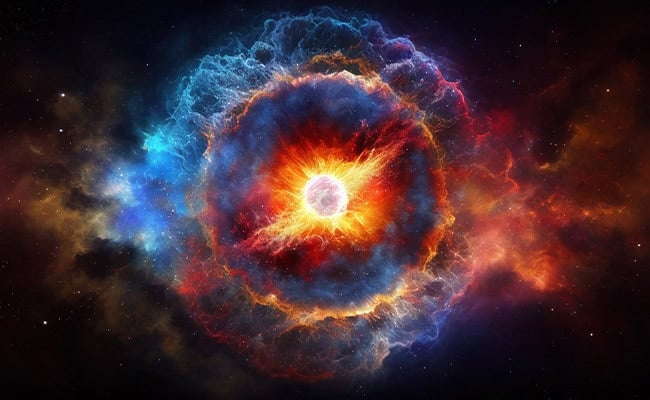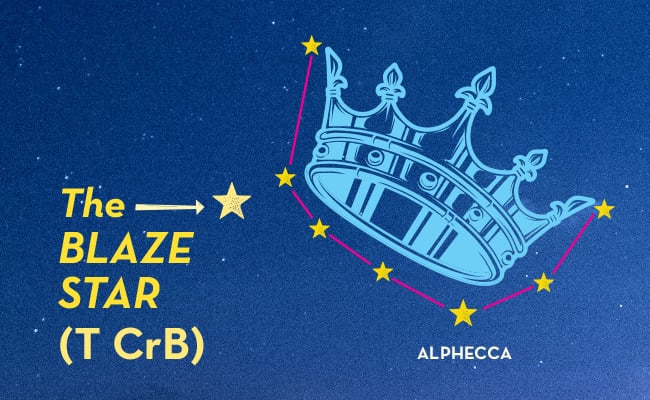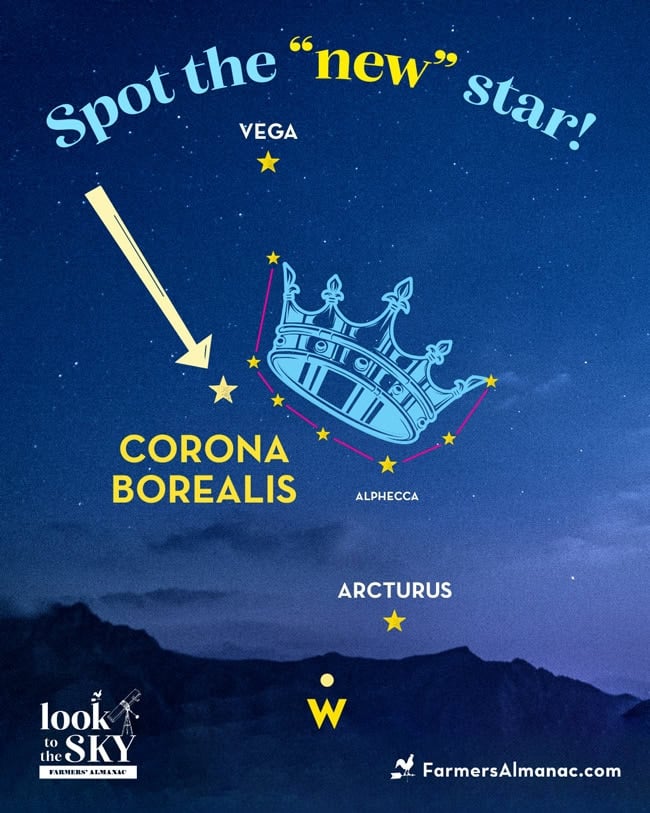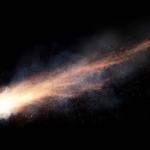Blaze Star Explosion – How To See The New Star

2024 has been a busy year for astronomy. From a total solar eclipse crossing Mexico, the United States, and Canada on April 8, to the amazing northern lights display reaching as far south as the Tropics on May 10, there have been rare wonders to see in the sky. Up next: the Blaze Star explosion will add a new star to the night sky! Here’s how to locate it and everything else you need to know about this rare once-in-a-lifetime event. Have any questions? Ask us in the comments below.
What is the Blaze Star?
T Coronae Borealis (T CrB for short)—also known as the “Blaze Star”—is a double star system (two stars) in the constellation Corona Borealis, the Northern Crown.

Where does the nickname “Blaze Star” come from?
For more than 75 years, the Blaze Star (T CrB) has been so faint that you needed a telescope to see it. But it will become about 1,000 times brighter than normal—rivaling the brightest star in the Northern Crown: Alphecca.
More about the Northern Crown (Corona Borealis):
The Northern Crown is one of the most identifiable constellations in the night sky, located approximately 3,000 light years from Earth. Although small and dim, once you locate the outline of the seven stars (soon to be eight stars) which form a small semicircular arc of sparkling jewels, you will always remember it.
The ancient Greeks named the constellation after the crown given to the beautiful Ariadne by the god Dionysus. But the constellation is so distinct that it inspired mythology around the world. Aboriginal people of Australia imagined these stars as a boomerang flying through the heavens. In one Native American legend, Corona Borealis is the cave where the big bear, Ursa Major, lives. And to astronomers in the Middle East and North Africa it was a bowl.
When will it happen?
There is no way to pinpoint exactly when the Blaze Star will erupt and become visible to the naked eye. The light from the nova travels at the speed of light and so astronomers cannot tell until the light reaches us. That said, we are predicting that this sky event may take place as early as mid-August (to September 2024) just in time for the official release of Farmers’ Almanac 2025.
Where should you look?
The nova explosion will spring from a star in the constellation Corona Borealis (the Northern Crown). Under normal conditions, the constellation looks like a half circle of faint stars with one semi-bright star halfway through the formation called Alphecca.
During the summer months, you can find Corona Borealis high in the southern sky after dark. From most northern latitudes it will look like a smile or a bowl. Although faint, the star pattern is between two of the brightest stars in the sky, Arcturus (to the right and below the crown) and Vega (to the left and above the crown).

Note: The Blaze Star (T Coronae Borealis or T CrB), is not normally visible to the naked eye. It is located near the star Epsilon Coronae Borealis which is on the left side of the bowl-shaped feature. When it goes nova, T CrB could become as bright as Alphecca.
Are you excited for the Blaze Star explosion? Tell us in the comments …
How long will the nova last?
The outburst of energy from T CrB will not last long. Past eruptions brightened the star for a matter of days. Over a week or two T CrB slowly faded from view and then became invisible to the naked eye once more. So, get ready for the nova and do not miss it.
Why is the Blaze Star explosion rare?
By no means, is this nova as spectacular or mind-blowingly cool as the total solar eclipse or auroras. But it is something so rare, that you may never see another like it in your lifetime.
What’s the cause the Blaze Star explosion?
A red giant star and white dwarf star circle each other every 228 days making up the Blaze Star’s binary star system. The larger but cooler red star feeds material to the smaller, hotter white dwarf and this transfer of energy builds up over time. Eventually it will explode as if it were a hydrogen bomb with the mass of a planet.
Will this event destroy the star?
No, the sudden increased brightness—known as a “nova”—does not destroy the star. In fact, it happens periodically with the star remaining intact.
A nova only happens in a binary system with two stars interacting. The term nova may make you think of “supernova.” Though both phenomena make a faint star suddenly appear to be bright, they are completely different processes.
A supernova is a violent explosion that releases so much energy that it can suddenly become as bright as a galaxy of billions of stars. The blast completely transforms the star and, depending on the mass, turns it into a neutron star (collapsed star) or a black hole.
The last brilliant supernova to be seen with the naked eye was in 1604. The explosion was so powerful that it could even be seen in the daytime sky.
How often does the Blaze Star explosion occur?
T CrB erupts about every 80 years. The last two documented outbursts were in 1946 and 1866. Previous observations are difficult to confirm since documenting star brightness was much more difficult prior to the 18th century. However, there is evidence that this nova had been witnessed as long ago as 1217.
How bright did it get last time?
In 1946, the Blaze Star explosion became as bright as a second magnitude star—brighter than the brightest star in Corona Borealis, Alphecca, and almost equal to the North Star. But it was still significantly fainter than the brightest stars in the sky such as Arcturus and Vega.
How do we know it’s going to get so bright?
Since T CrB brightens dramatically every 80 years, why are we looking for it this year and not in 2026? Astronomers monitoring the star have noticed tell-tale signs of an imminent outburst of energy. In fact, the star is behaving exactly as it did in the years leading up to the 1946 nova (sudden increase in a star’s brightness).
If this pattern continues the nova should happen in a matter of days, weeks, or months. Of course, astronomers have only closely observed T CrB through one cycle. Is that enough to accurately predict the next eruption? Stay tuned!
Related
Are any other stars exploding any time soon?
There are only about ten other stars known to create a nova in our Milky Way galaxy. Astronomers call them recurrent novae since they erupt on a regular basis. There may be other stars that behave this way, but they may have prolonged periods of hundreds or thousands of years of dormancy that make it harder to observe.
Out of the ten recurrent novae, T CrB is by far the brightest one visible from Earth and it is the only one easily observable to the naked eye when blazing.
Have any other questions? Share in the comments!

Dean Regas
Dean Regas is an expert astronomer and a renowned author who has written six books, including 100 Things to See in the Night Sky and How to Teach Grown-Ups About Pluto. An astronomer with more than two decades of experience, Dean is a dynamic writer and public speaker who brings the complicated field of astronomy down to Earth for students of all ages. From 2010-2019, he was the co-host of the PBS program Star Gazers. He is a frequent guest on National Public Radio’s Science Friday with Ira Flatow and NPR's Here & Now. He also hosts a popular astronomy podcast called Looking Up with Dean Regas. Learn more about him at www.astrodean.com





